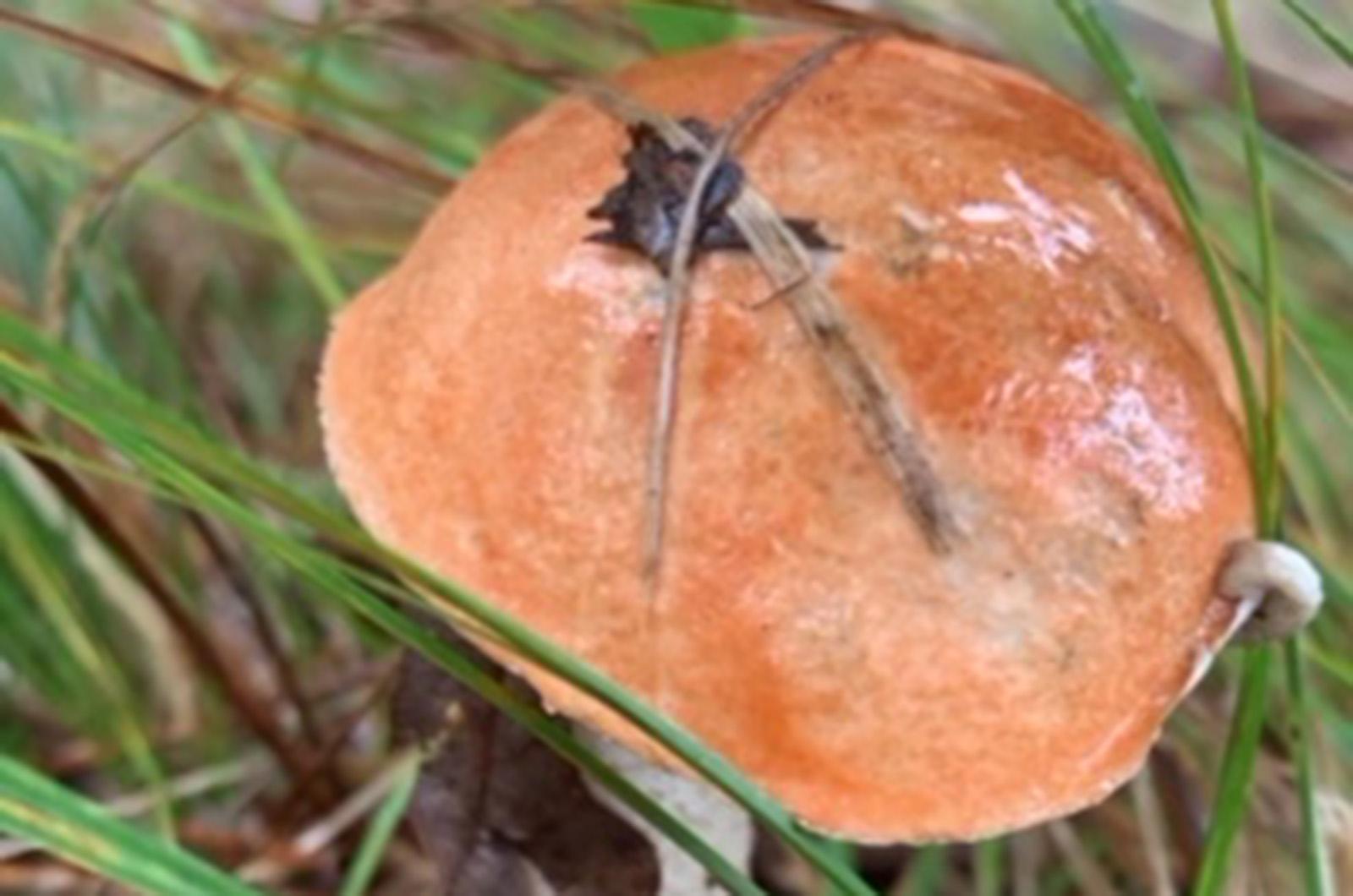Maggots and mortality are worst-case scenarios.
Shakespeare knew maggots, if not mushrooms, and had this to say on the eat-or-be-eaten interplay between humans and wigglers. In Hamlet, the troubled prince dwells on mutual consumption, saying, “A man may fish with the worm that hath eat of a king, and eat of the fish that hath fed of the worm.”
More prosaically, you could get a marvelous meal — with or without the maggots — of some vitamin and mineral-containing mushrooms. The dose of vitamins D and B is a plus and a side of selenium and potassium in the ‘shrooms could even make you feel strong and invincible. In the case of leccinum mushrooms, consume for power or at your peril.
Last year at around this time, a distinctive mushroom appeared in the woods on one of my favorite walks. It disappeared quickly and I forgot all about it until last week when it popped up in the same place. Thank its mycelium, or underground system of threads, that allow for this annual fruiting.
Having forgotten both it and its name until now, I identified it again and was reminded that it was the red-capped scaber stalk. Great name: cool ‘shroom that is favored, foraged and sometimes feared as an edible mushroom. The genus, leccinum, describes many mushrooms, many of which are edible and delicious.
This one, too, can be edible and delicious. However, as with many mushrooms, there are confusions of identity — so take care. Individual allergies and susceptibilities, and shaky preparation knowledge can get in the way of a healthy mushroom meal. Leccinums include about 75 species and members can be found in Europe and North America. Individual varieties can have different names and can easily be misidentified.
One of the men credited with one of this mushroom’s names was 18th-century French physician, botanist and mycologist Jean Baptiste Francois Pierre Bulliard, author of France’s Natural History of Mushrooms. A man of science, he died under a shroud of mystery, purportedly in a hunting accident. One with a flair for drama would surmise that perhaps he perished on a mushroom-hunting adventure gone awry — but I am just making that up.
Edible mushroom resources remind foragers that these bolete mushrooms can be a notoriously-difficult group to identify. One helpful characteristic is that mushrooms are “ectomycorrhizal,” which means they form symbiotic relationships or associations with different trees. So, knowing the surrounding trees can help identify the host-specific mushrooms below them.
And if you are confident enough to harvest the leccinum species, for safety, the red-capped scaber must be cooked well and for a long time: it is known to cause gastrointestinal distress if eaten raw or undercooked. Reports of vomiting and stomach cramps are common with the scaber.
Mycophagists — mushroom eaters — should also know that this species can be targeted by those aforementioned maggots, rot quickly, and turns black upon cooking.
In a few extreme cases, even death has resulted from its consumption. The North American Mycological Association reported a leccinum mortality of an elderly person in New Hampshire in 2009.
Drying this mushroom, however, allows for safe eating.
If I haven’t talked most of you out of a desire to consume these mushrooms, take note.
Identify red-capped scaber-stalk mushrooms by their scabers. These are raised black, brown, or red markings on the stem of the mushroom. Look for its red cap with white pores on its underside, white flesh that bruises burgundy, then grey and purple-black.
If you are still game to the idea of collecting and eating these fall mushrooms and have an excellent constitution and confidence in your identification skills, all I can say is go for it. Not having those aforementioned characteristics, I will continue to enjoy these mushrooms with my eyes and not my stomach.
Suzan Bellincampi is Islands director for Felix Neck Wildlife Sanctuary in Edgartown and the Nantucket Wildlife Sanctuaries. She is also the author of Martha’s Vineyard: A Field Guide to Island Nature and The Nature of Martha’s Vineyard.




Comments
Comment policy »